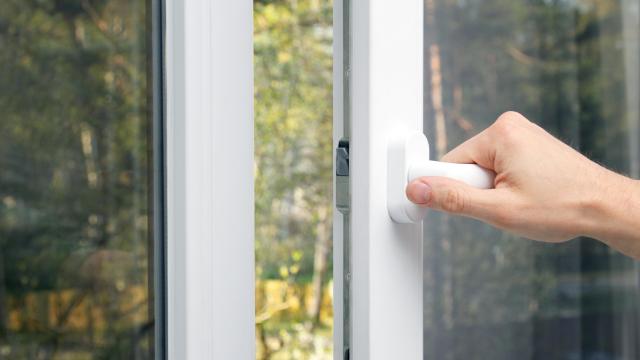The feeling of a warm breeze on a spring day is something many allergy sufferers have had to go without because with the breeze comes the pollen. Flowers blooming also means pollen dropping, kicking up all that sneezy dust into the air. Luckily for your sinuses, there are a few clever ways to keep the air inside fresh while also limiting the amount of pollen you’re bringing in from outside.
How to use a temporary allergy screen to block pollen
If you want to have your windows open during allergy season, there’s one game-changing type of window screen that can help filter out pollen while letting the breeze blow. Using a roll of allergy screening and some temporary caulk or tape, you can allergy-proof your window without needing to keep it closed. Assuming you already have regular screens in your windows, you can add a layer of allergy screening by cutting a section out in the same size and shape as your window and sealing it into the existing frame.
Before purchasing a roll of screen material, make sure the roll you buy is the right width for your window. Measure the height and width of your window and then cut the screen to size using scissors. Once you have your allergy screen panel cut to the size of your existing screen, use your temporary window caulk or window tape to seal the screen all the way around the frame, leaving no gaps or bubbles. Once that’s done, you should be able to open and close your window as usual without letting any pollen in.
A more permanent allergy screen solution
If you want to do a more permanent upgrade, you can buy window screen panels to custom fit your windows and replace your window screens with these. If you go this route, you should to check with the manufacturer about measuring to fit and choosing the screen-type that will best fit your home’s windows. Doing a whole house screen replacement can run you between $US100 ($139) and $US500 ($694) per window, making it an expensive project.
Check your weather stripping and crevices
To keep pollen from blowing in, it’s also a good idea to check your existing windows and screens for gaps around the edges. Sometimes, if the screen doesn’t fit snugly, pollen can collect on the sill or in the crevices around the screen. If you find a place where the seal is damaged, you can use window caulk to repair it or you can replace the weather stripping. Sealing up any gaps will help keep pollen at bay and improving the efficiency of your HVAC system.
If you have sealed up a gap or sealed around your existing screens with allergy-proof screens, you should do a thorough cleaning of the interior of your window frame, tracks, and sill. Use a damp cloth and some dish detergent to wipe away any pollen residue that’s made its way inside. If your window tracks are especially dusty, you can also try taking the screens out and hosing them down with water as well as cleaning out the tracks they slide in.

Leave a Reply
You must be logged in to post a comment.